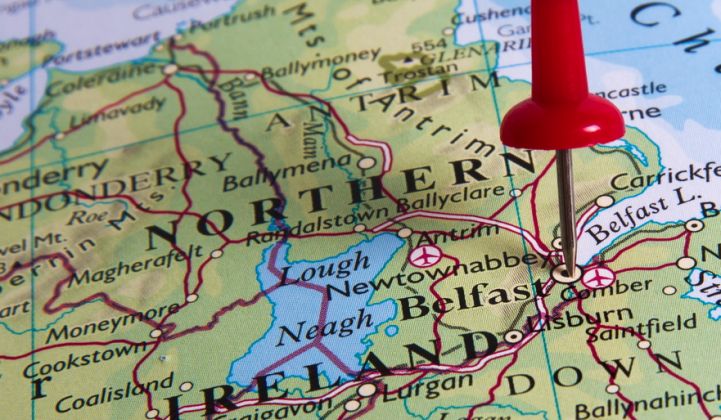The last few months have brought some promising developments for the nascent energy storage industry in Ireland.
The need for energy storage in both the Republic and the North is clear; renewables currently supply 23 percent of all energy, and EU agreements have set a target of 40 percent by 2020 for both territories. With no feed-in tariffs or other incentives in the Republic for self-generation, the market will be dominated by big wind farms.
Due to the intermittent nature of wind generation, EirGrid, which has responsibility for all of the Republic's electricity infrastructure and owns much of the North's grid assets, calculates its infrastructure would have to cope with up to 75 percent renewable energy.
There is already so much peak generation from wind, particularly in winter, that turbines regularly have to be curtailed.
So what are the storage options? According to the the U.S. Department of Energy's energy storage database, there's an installed base of two large pumped hydro plants. More pumped hydro is planned, and the geology exists to make compressed air energy storage a reality -- although CAES projects are highly speculative.
AES is also developing a 100-megawatt lithium-ion battery system in Northern Ireland -- the largest battery storage system in Europe when fully built.
There's also a flywheel pilot project underway in the Republic's County Offaly. The initiative was started by the University of Limerick and is being led by the Irish company Schwungrad Energie.
Much of the technical expertise for the flywheel project comes from U.S.-based Beacon Power. According to consultant John Gallagher, Beacon -- along with backer EirGrid -- is testing the economics of selling frequency regulation and other services to the grid operator. The project will initially be tested out with both renewable and conventional energy, and should go live sometime in 2017.
Flywheels are designed to supply energy in short bursts for frequency regulation. But load shifting requires more longer-term, slow-release storage. The Republic's Tallaght Smart Grid Test Bed, located in a Dublin suburb, should be capable of both, with a system that combines Maxwell Technologies ultracapacitors with lithium-ion batteries. The Microgrid Stabilizer was recently installed by German developer Freqcon GmbH, and has the backing of the South Dublin County Council and a local micro generation association.
According to Freqcon's Klaus Harder, as with the County Offaly flywheel pilot, the stabilizer installation is being tested to prove its commercial feasibility in selling different services to the grid operator. But this project can also provide load-shifting to help match renewable generation with peak consumption in the evening, said Harder. It can provide an uninterruptible power supply contingency as well.
EirGrid's DS3 program, due to start in 2017, is a positive sign for storage developers. This, the operator promises, will allow energy storage companies to provide grid services via a system of competitive bids.
If the system gets off the ground, it will become a powerful incentive to develop the energy storage market in Ireland by adding to the black start, reactive power and operating reserve services that currently receive remuneration from EirGrid.
Freqcon is also looking beyond the 2020 timeframe to more distant opportunities: "Everyone is looking at wind -- but what happens when we have a lot more of it, but want additional renewables beyond the 40 percent figure?" asked Harder.
In that case, more storage projects will likely be needed -- helping the industry scale beyond the pilot projects currently underway.



